This is part V of a series on my trip home to Australia for the US winter break (see part I, part II, part III, and part IV).
December 7th, 1941. A day that will live in infamy. Up until that date, the US had been content to sit on the sidelines of World War II, and clandestinely supply the Allied Forces. Peace negotiations with Japan had stalled; Japan refused to give up the territories it had amassed or the ambitions it harboured, and so the US embargoed its oil exports to the Asian nation - some 80% of Japan's consumption. Something clearly had to give. The Japanese fleet would soon run out of the oil needed to fuel its march across Asia. The threat of the United States had to be eliminated - specifically, its carrier fleet in the Pacific.
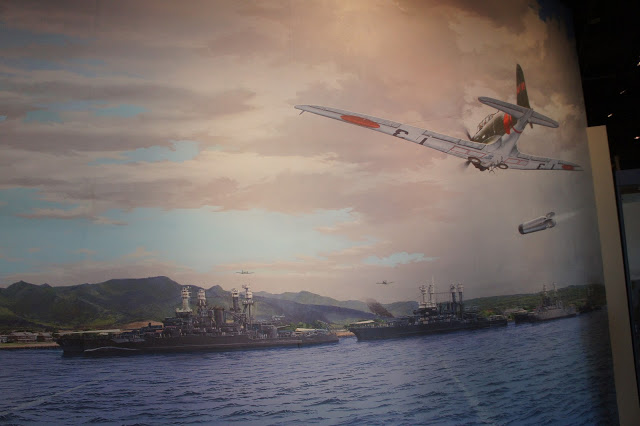
A surprise attack would be launched on the US naval base at Pearl Harbour, home of the Pacific Fleet. The Japanese carrier fleet sailed under top secrecy, dodging the outer US patrols, and positioned itself for the most audacious assault in modern warfare. Over three hundred planes were launched towards the US base, a mass so large that the US radar operators on the north of O'ahu did not realise what they were looking at. At 7:48am local time, the attack began. Within hours, 18 ships, including five giant battleships, had been sunk or run aground. Over 2000 American fatalities and 1000 wounded for the loss of less than 100 Japanese troops and 30 aircraft. The theatre of battle had shifted, and the Pacific War had begun.
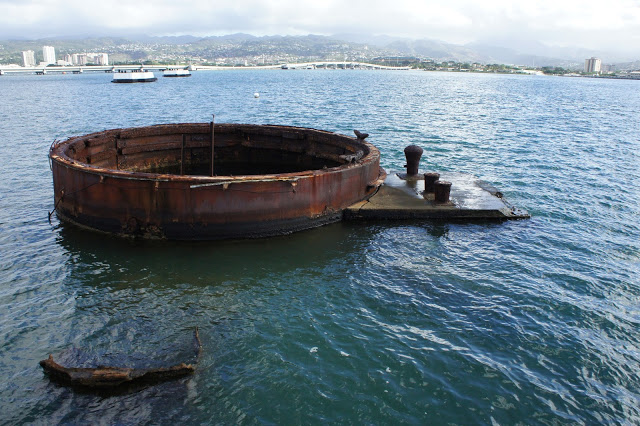
Today, Pearl Harbour is one of the most sobering sites that I have ever visited. A moving memorial to the American and Japanese forces who lost their lives in the name of conquest on December 7th, 1941, it is a must-see for any visit to Honolulu. There are several different sites located at the Harbour, including the USS Arizona Memorial, the battleship USS Missouri, the submarine Blowfin, and the Pacific Aviation Museum, and covering them can take up the better part of a whole day. Located just to the west of the city, it is accessible both by municipal buses, and private shuttle services directly from your hotel. The shuttles are relatively inexpensive, so I opted to book a shuttle service to leave my hostel at 7am in the morning, aiming to arrive at Pearl Harbour by 8am.
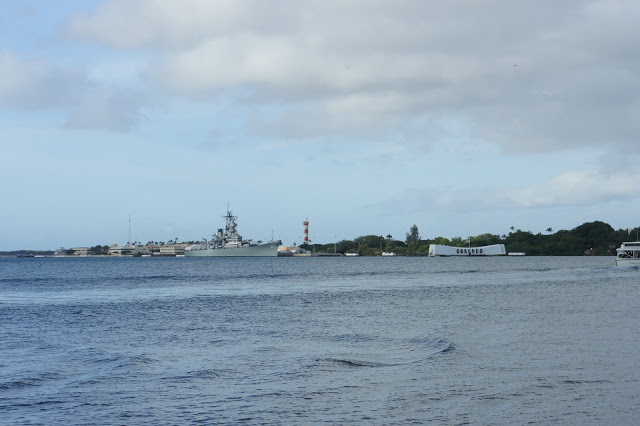
The USS Arizona was one of the battleships moored at Battleship Row on the morning of the fateful attack. Struck by several bombs in the assault, the Arizona's forward magazines spectacularly exploded, breaking the back of the ship and instantly killing over a thousand sailors. The ship burned for more than two days, surrounded by further scenes of devastation as the US armed forces struggled to recover. Today, the white USS Arizona memorial straddles the hull of the ship that still sits at the bottom of the harbour, the final resting place of thousands.
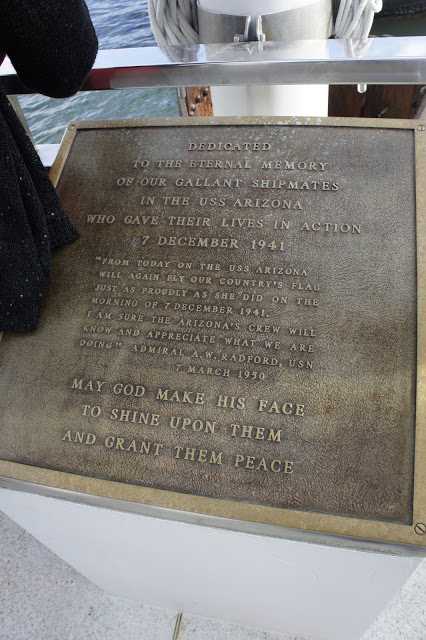
Naval ferries carry people from the shore to the memorial and back again. Entry is free, but tickets are given away on a first-come first-served basis at the Pearl Harbour ticket office (though they can be reserved for small fee online if you're organised well in advance). Typically, all tickets have disappeared by midday; my 8am arrival led to a ticket for entry at 9am. You can also purchase tickets for all of the other Pearl Harbour sites at the ticket office; there are small discounts for packaging two or more of them together, and shuttle buses connect each of the sites. A word of warning: you will have to check bags for a small fee before entering the Pearl Harbour complex; bottles of water are allowed, as well as plastic bags and women's purses, but any other bags must be left outside. Come prepared - pack lightly, or ready to check.
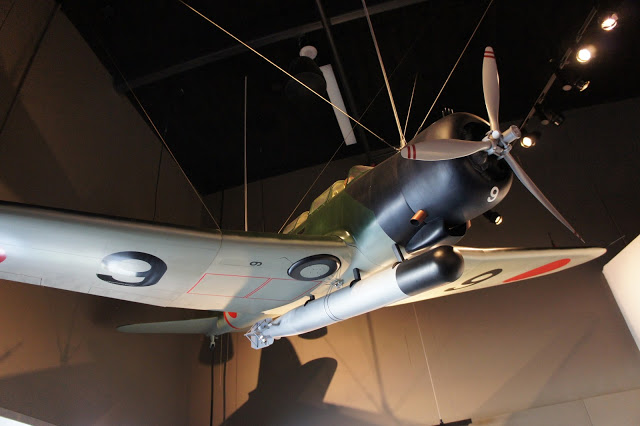
Having a spare hour prior to your ticketed entry time is perfect for checking out the free museum adjacent to the ticket office. It gives an excellent introduction to the background of the Pacific War, with interactive displays, beautiful models of warships and planes, and moving tributes to the courage shown by servicemen and women on that day. Particularly interesting is the description of the Japanese preparations for the attack. Meticulous intelligence from spies and scouts was gathered. New dive bombing techniques (skimming low and fast over the water) as well as specially designed torpedoes that could operate in the relatively shallow Pearl Harbour were developed. But unfortunately for the Japanese, their true targets - the American carriers USS Lexington, Enterprise, _and _Saratoga - were not present at the time of the attack. These carriers, as well as the hastily transferred USS Yorktown _and _Hornet, were critical in swinging the course of the Pacific War back to the United States through the Battle of the Coral Sea and the decisive Battle of Midway. World War II marked the end of the era of the heavily armoured battleship, and launched the naval dominance of the fleet carrier - a dominance that continues today.
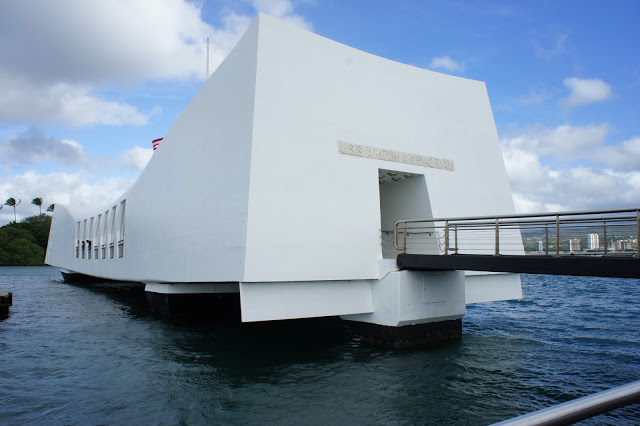
A visit to the Arizona memorial begins with an excellent short film that reminds the visitor of the site's status as a grave for thousands of sailors. You then proceed to the naval ferry that carries you across Pearl Harbour to the memorial itself, floating white above the rusting hulk of the Arizona. Still leaking oil into the harbour (the "Black Tears of the Arizona"), the ship is a sombre symbol of tragedy. The terror of being fried alive as the ship exploded is hardly imaginable. Within the memorial are lists of the sailors who perished, as well as the ashes of survivors who have chosen to be interred with their former compatriots. People from all over the world - no matter their allegiance in the war - come here to pay their respects, and all are welcome to do so. I thought that the even-handed depiction of the attack on Pearl Harbour and its aftermath was one of the unsung triumphs of the site.
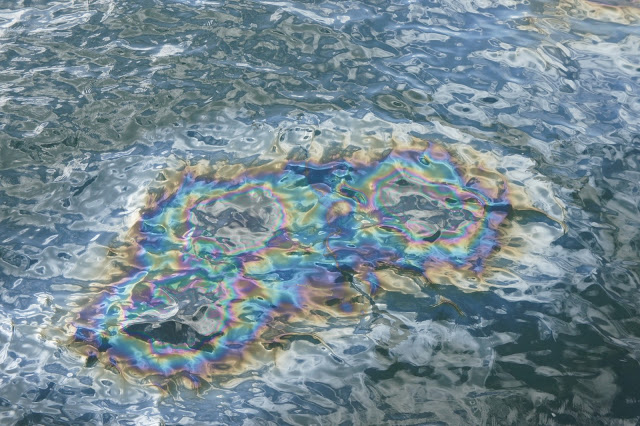
Moored just next to the Arizona is the battleship USS Missouri - the "Mighty Mo". It was upon this ship that the instrument of Japan's surrender was signed in 1945 in Tokyo Bay, bringing to an end six years of bloody warfare. Touring it is an amazing trip onto another world - from the massive deck guns to the cramped belowships and scrubbed teak decks. (An aside - I learnt that teak is weather-resistant, corrosion resistant, durable, nonslip when wet, and doesn't shrink - prized qualities for boatbuilding!).
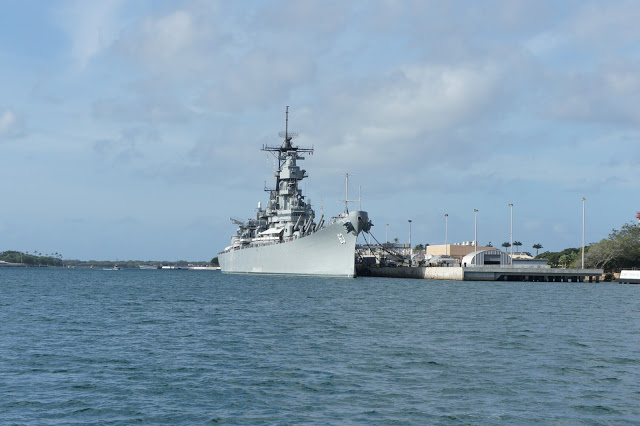
Today, the ship is no longer staffed by a full naval complement. Instead, a multitude of extremely knowledgeable tour guides wander the decks, happily dispensing stories and histories of the ship's operational life and its role in the war. I learnt that each American battleship is named after a state; the Missouri was the third ship to carry that name, and she was the last battleship completed by the US. Her most recent naval engagement was as fire support during Operation Desert Storm in the early 1990s. And just visible in the above photo is a patch of white on the side of the ship; this marks the impact site of a kamikaze pilot who crashed into the ship in 1945.
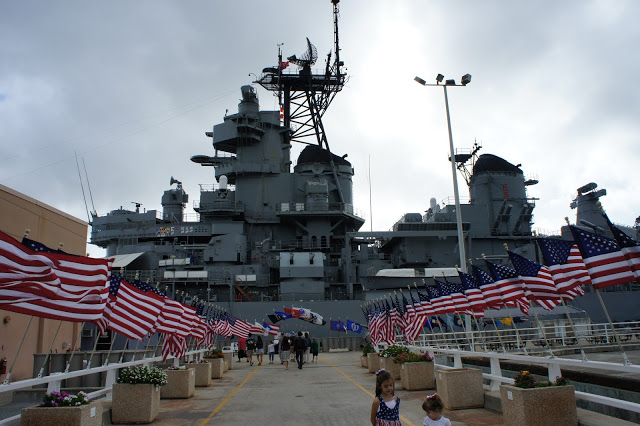
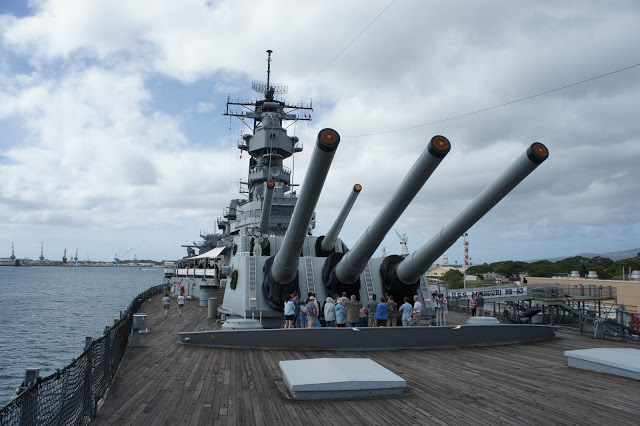
Much of the battleship is accessible when you visit, with the exception of the furthest belowdecks sections such as the engine rooms and shell magazines. You can climb all the way up to the bridge for a spectacular view over the massive forward guns towards the Arizona memorial. You can also explore the cramped living quarters, mess halls, and working areas of the ship's interior, including sleeping bunks, an industrial-sized kitchen, offices, workshops, the officer's lounge and quarters.

I learnt some amusing anecdotes about the signing of the Instrument of Surrender. Firstly, the British had commissioned a beautiful wooden table to be used for the signing ceremony; but at the last minute, it was discovered that the table was too small to fit the documents. A set of fold-up tables were hastily acquired from the mess hall, and covered with tablecloths to obscure their utilitarian origins. Secondly, the great US Fleet Admiral Chester Nimitz, commander of the Pacific Fleet, was delegated to sign the Instrument on behalf of the United States. However, General Douglas MacArthur, the Supreme Commander for the Allied Powers, did not intend to be left out of the signing process, and managed to secure a place for his signature, with his title as Supreme Commander. All of the other Allied signatories were country representatives, which tells you a little about MacArthur's personality. And finally, there were two copies of the Instrument; one for Japan, and one for the Allied forces. Both are on display on the Missouri; but on the Japanese copy, the Canadian representative (Colonel Lawrence Cosgrave) accidentally signed below his line instead of on it, causing everyone following him to also sign in the incorrect location. When the error was noticed, the preprinted titles were hurriedly crossed out and rewritten by hand to match the locations of the signatures.

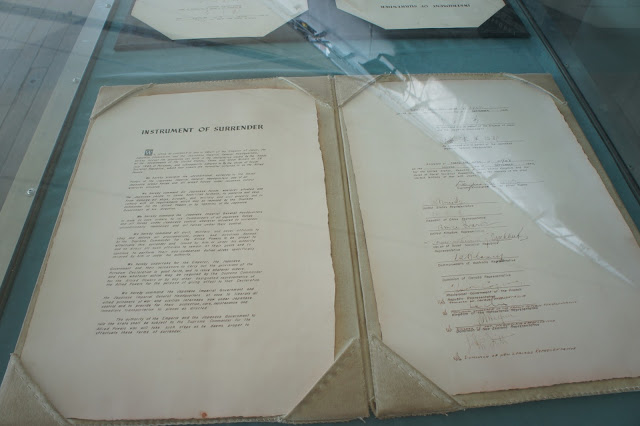
The Pacific Aviation Museum sits in two enormous hangers on Ford Island, near the Mighty Mo. Filled with all manner of planes dating from World War II up until today, the museum is a fascinating catalogue of aerial warfare through the ages. The collection includes the Mitsubishi Zero fighters that dive-bombed Pearl Harbour, Russian MiGs, Sea King helicopters, and modern F-14s and F-15s. The museum is particularly interesting as it covers much of the period after the Pearl Harbour attack and up to modern times. It recounts the ultimately successful US Pacific War campaign through the Battles of the Coral Sea and Midway, the changing face of aerial warfare in Vietnam, and operations in modern times.
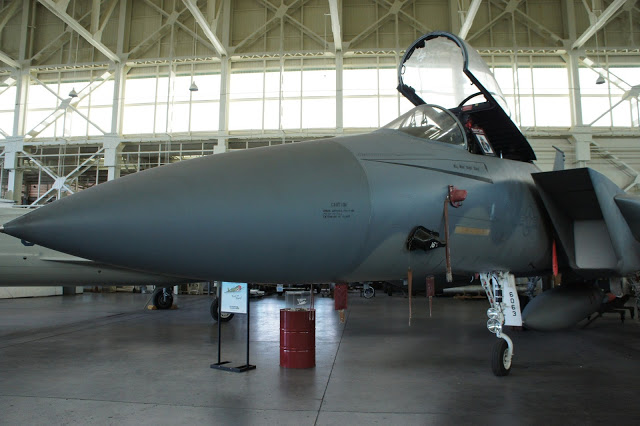
One attack remembered in the museum was the Doolittle Raid, which took place four months after the attack on Pearl Harbour. 16 long-range bombers were launched from the_ USS Hornet_ to attack Japan in retaliation for Pearl Harbour. Planned and led by Lieutenant James Doolittle, the raiders were to attack military targets in Tokyo, before proceeding to land in friendly China. Unfortunately, the Hornet was spotted by a patrol craft whilst 300km further from the Japanese coast than planned, and the element of surprise was lost. The decision was made to launch the mission immediately, and the bombers took off, rocketing towards the island country. They succeeded in reaching and bombing their targets, and proceeded to escape towards China and the Soviet Union. Unfortunately, the early launch meant that the raiders were critically low on fuel, and so each one was forced to crash land or bail out along the Chinese coast before reaching their intended air bases. The majority of the crews were able to escape Japanese retaliation thanks to the help of Chinese airmen and civilians. But sadly, the Chinese paid dearly; Japanese forces killed an estimated 250,000 civilians whilst searching for the raiders, tearing airfields apart and using germ warfare.
The raid itself did little damage to the intended targets, but the direct military strike substantially boosted the morale of the American public and armed forces. In the eyes of the Japanese military, it seemed apparent that the home islands were vulnerable to air attack. The Indian ocean carrier force was recalled to defend the homeland, and the attack influenced the decision to target the Midway atoll northwest of Pearl Harbour - the site of the critical and decisive defeat of the Japanese fleet in the Battle of Midway.
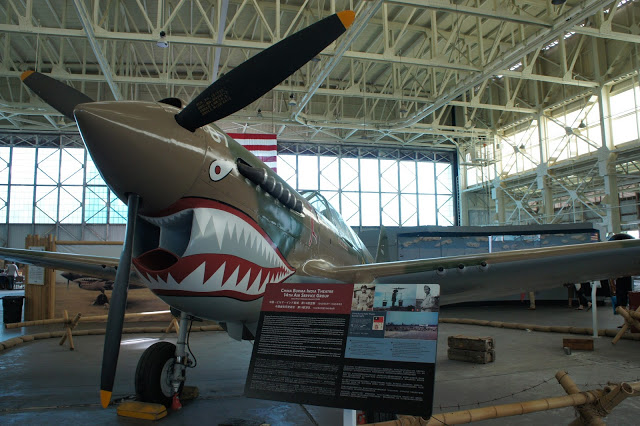
One final anecdote from the Aviation Museum tells the story of how Commander Joseph Rochefort and his cryptanalysis team in Hawaii managed to break the Japanese JN-25 cipher, revealing plans to attack a mysterious target "AF". Rochefort suspected that AF referred to Midway, and one of his officers hatched a brilliant plan to test the hypothesis. They suggested that Midway send out an unencrypted message advising a water supply failure in hopes of provoking a Japanese response. The bait was taken; the Japanese broadcast instructions to load more water desalination equipment, confirming the analysis. The broadcasts also revealed that the attack was to come before mid-June, giving the Americans a substantial intelligence advantage for the Battle of Midway.

Moored just near the Pearl Harbour ticket office on the mainland is the submarine USS Blowfin, which can be entered for another fee. I chose to not tour the submarine, having been aboard one before (the HMAS Vampire, moored in Darling Harbour in Sydney). By now I was feeling a little military fatigue, so I elected to return to Honolulu for my final few hours in Hawaii.
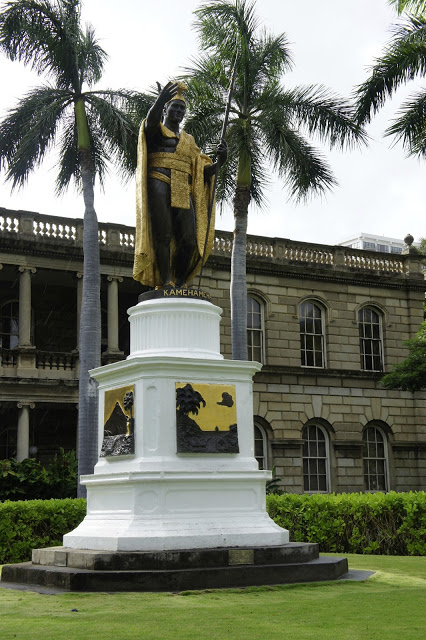
Hawaii has quite a storied history. In the late 1700s, warring tribes and chiefs fought each other for power, until the islands were conquered by King Kamehameha I ("Kamehameha the Great") in the early 1800s. This formally established the Kingdom of Hawaii as an independent state, and alliances with its Pacific neighbours kept it that way. Kamehameha is remembered by several statues dotted across Hawaii; the one above stands opposite the Iolani Palace in downtown Honolulu. There's a funny story about this statue; it's actually a replacement. The original was cast in Europe, but while en route to Hawaii its ship sank off the Falkland Islands following a storm and a fire. The insurance funds from the loss of the statue were used to commission a new one (the one in the picture), but in the meantime, fisherman in the Falklands recovered the original statue, which was recovered by a British sea captain and then sold to the Hawaiian government. The original statue (in worse shape than its replacement) was placed near Kamehameha's birthplace on the Big Island.
Fun fact: the first contact between the inhabitants of Hawaii and Europeans was from the landing of none other than Captain James Cook in 1778. Captain Cook is the British explorer famed Down Under as the man who discovered Australia in 1770. Unfortunately, Hawaii was also where Captain Cook was killed after returning to the Big Island for repairs to his ship's mast in 1779. A fight broke out between his crew and the native Hawaiians, resulting in Cook being felled by a blow to the head, and killed by stab wounds as he lay in the surf.
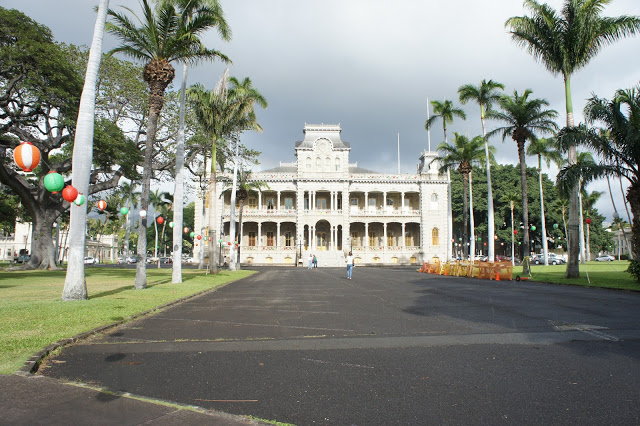
Opposite the Kamehameha statue is the Iolani Palace - the only royal palace on US soil. It was the official residence of the monarch of Hawaii, prior to the overthrow of the monarchy and establishment of a republic in 1893. After the overthrow, the palace was used as the provisional capital building for over 70 years. Nowadays the more modern capitol buildings sit just behind it to the north east, and the palace is open as a museum to the public.
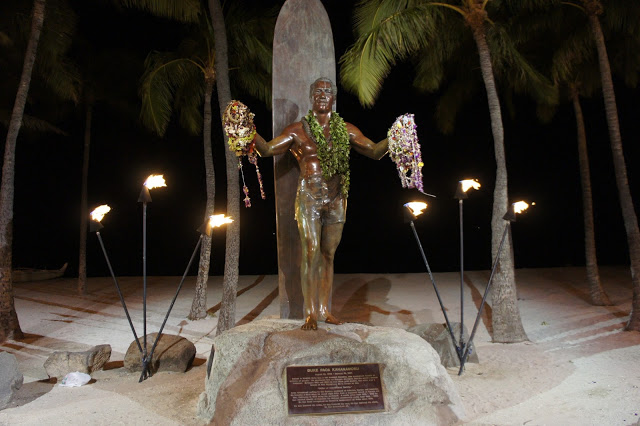
My last night in Waikiki was spent watching hula dancers in an international food court near my hostel, and catching up with a friend from Berkeley who had just arrived to Honolulu (though with many, many delays due to freezing cold conditions at San Francisco). Finally, I left Waikiki early in the morning for the last leg of my journey: the ten hour flight back home to Sydney, Australia. In a week I had covered a substantial amount of ground - possibly too much. But now I know the places to get and see again, and sometime in the future I'll be back to see those sights that I missed the first time round. The US is such a diverse country, full of interesting people and things to see. And there's still so much more.